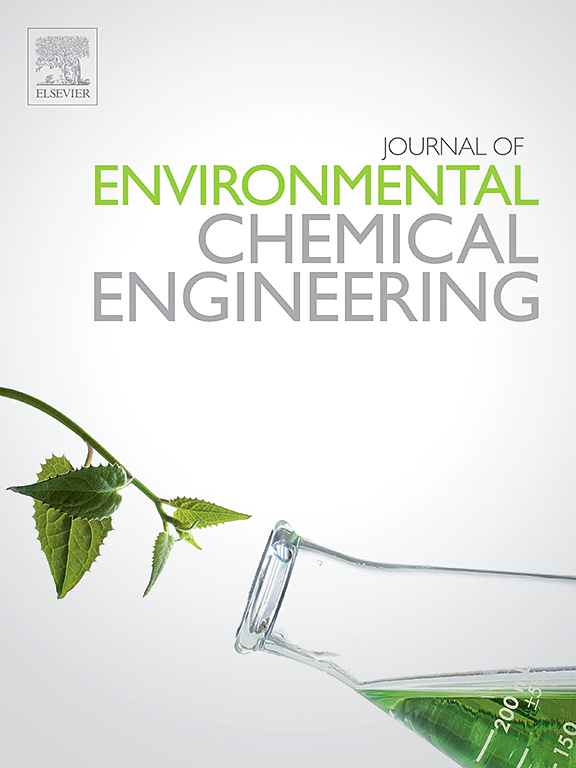A critical review of oxygen supply and control strategies in single-stage partial nitritation-anammox system for autotrophic nitrogen removal from wastewater
IF 7.2
2区 工程技术
Q1 ENGINEERING, CHEMICAL
引用次数: 0
Abstract
The single-stage partial nitritation and anerobic ammonium oxidation (PN/A) process stands out as a sustainable and energy-efficient approach for nitrogen removal from wastewater. While oxygen is essential for the metabolic activities of ammonium oxidizing bacteria, yet its concentration must be delicately balanced. This critical review provides an in-depth analysis of oxygen supply and control approaches in single-stage PN/A systems, focus on methods such as intermittent aeration and continuous low-rate aeration. It examines the interactions between oxygen availability and the microbial communities, and evaluates the operational effectiveness and impact on system performance. The review also introduces several strategies that have been employed to optimize oxygen supply, identifies gaps in current knowledge regarding oxygen's role in the PN/A process and proposes future research directions to address these issues. These include a deeper understanding of microbial ecology under varying oxygen regimes, the development of advanced monitoring and control technologies for real-time optimization of oxygen levels, and the exploration of novel reactor designs to enhance oxygen utilization efficiency and microbial synergy. This review underscores the importance of developing oxygen supply strategies in PN/A systems and calls for further research to refine these strategies, thereby enhancing the process's energy efficiency and nitrogen removal performance. By addressing these challenges, the innovative strategies discussed in this review pave the way for the practical implementation of Anammox technology, offering a sustainable solution for wastewater nitrogen removal.
单级部分硝化-厌氧氨氧化系统供氧及控制策略综述
单级部分硝化和厌氧氨氧化(PN/A)工艺是一种可持续和节能的废水脱氮方法。氧对氨氧化菌的代谢活动至关重要,但其浓度必须精确平衡。这篇综述深入分析了单级PN/A系统的供氧和控制方法,重点介绍了间歇曝气和连续低速率曝气等方法。它检查了氧气可用性和微生物群落之间的相互作用,并评估了操作有效性和对系统性能的影响。该综述还介绍了几种用于优化氧气供应的策略,确定了当前关于氧气在PN/A过程中的作用的知识差距,并提出了解决这些问题的未来研究方向。这些包括对不同氧气制度下微生物生态的更深入了解,开发先进的监测和控制技术以实时优化氧气水平,以及探索新型反应器设计以提高氧气利用效率和微生物协同作用。这篇综述强调了在PN/A系统中开发供氧策略的重要性,并呼吁进一步研究以完善这些策略,从而提高工艺的能源效率和脱氮性能。通过解决这些挑战,本文讨论的创新策略为厌氧氨氧化技术的实际实施铺平了道路,为废水脱氮提供了可持续的解决方案。
本文章由计算机程序翻译,如有差异,请以英文原文为准。
求助全文
约1分钟内获得全文
求助全文
来源期刊

Journal of Environmental Chemical Engineering
Environmental Science-Pollution
CiteScore
11.40
自引率
6.50%
发文量
2017
审稿时长
27 days
期刊介绍:
The Journal of Environmental Chemical Engineering (JECE) serves as a platform for the dissemination of original and innovative research focusing on the advancement of environmentally-friendly, sustainable technologies. JECE emphasizes the transition towards a carbon-neutral circular economy and a self-sufficient bio-based economy. Topics covered include soil, water, wastewater, and air decontamination; pollution monitoring, prevention, and control; advanced analytics, sensors, impact and risk assessment methodologies in environmental chemical engineering; resource recovery (water, nutrients, materials, energy); industrial ecology; valorization of waste streams; waste management (including e-waste); climate-water-energy-food nexus; novel materials for environmental, chemical, and energy applications; sustainability and environmental safety; water digitalization, water data science, and machine learning; process integration and intensification; recent developments in green chemistry for synthesis, catalysis, and energy; and original research on contaminants of emerging concern, persistent chemicals, and priority substances, including microplastics, nanoplastics, nanomaterials, micropollutants, antimicrobial resistance genes, and emerging pathogens (viruses, bacteria, parasites) of environmental significance.
 求助内容:
求助内容: 应助结果提醒方式:
应助结果提醒方式:


